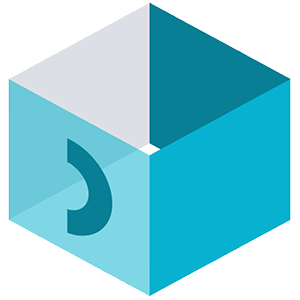FAQ Configurator
Products:
What Is a 3D Configurator?
- What is a 3D configurator and why is it useful?
A 3D configurator is an interactive digital tool that allows users to customize a product in real time, viewing every change in three-dimensional format. It’s especially useful for complex or modular products because it simplifies the decision-making process and improves understanding of the offer. - Why are 3D configurators becoming so important?
Because products are increasingly complex, modular, and customizable. Configurators help companies simplify the purchasing experience while maintaining a high perceived product value. - Are 3D configurators just graphical or also intelligent?
Many configurators, such as those developed by Ultramas, integrate intelligent algorithms that guide users toward optimal technical and economic solutions. They act as true digital consultants. - Do I need to install software to use a 3D configurator?
No. A good 3D configurator should be web-based and accessible directly via browser on any device: desktop, tablet, or smartphone.
User Experience and Features
- Does a 3D configurator improve user experience?
Yes. Thanks to an intuitive, user-friendly interface, even non-expert users can easily configure a product. This reduces the learning curve and increases engagement. - What are the benefits of real-time personalization in a 3D configurator?
It allows users to select materials, sizes, functions, and accessories based on their needs, creating strong emotional engagement and reducing cart abandonment rates. - Does 3D configuration help customers make better decisions?
Yes. Every change is displayed in real time within the configurator, eliminating uncertainty and reducing errors, misunderstandings, and returns. - What does “dynamic personalization” mean in a 3D configurator?
It refers to the configurator’s ability to adapt in real time to the user, device, and context, showing only what’s relevant and optimizing the experience.
Technologies and Innovations
- What innovations are transforming the 3D configurator market?
- Artificial Intelligence for smart suggestions
- Augmented and Virtual Reality for immersive experiences
- Machine Learning for analytics and personalization
- Omnichannel capabilities for consistent experiences across all channels
- How is AI changing the 3D configurator?
AI enables analysis of user behavior, optimized recommendations, technical layouts, and strategic insights. - How do Augmented Reality and Virtual Reality enhance 3D configuration?
- Augmented Reality (AR) allows products to be visualized in the real world
- Virtual Reality (VR) enables immersive simulations
- Both enhance understanding and engagement
- What role does omnichannel integration play in modern 3D configurators?
Omnichannel integration ensures continuity between physical and digital channels: customers can start on one channel and finish on another, with data always synchronized.
Integration with Business Systems
- Why integrate the 3D configurator with business systems?
To automate processes: from configuration to production to after-sales, improving efficiency and customer experience. - What are the benefits of connecting a 3D configurator to an e-commerce platform?
- Smooth and simplified purchase journey
- Up-to-date pricing and availability
- More conversions, fewer mismatches between configuration and inventory
- What are the benefits of connecting a 3D configurator to the ERP system?
- Automatic generation of bills of materials
- Unique product codes
- Production orders aligned with capacity and manufacturing rules
- What are the benefits of connecting a 3D configurator to the CRM system?
It collects data on user interactions, supporting targeted marketing, follow-ups, and advanced profiling. - How complex is it to integrate a 3D configurator with business systems?
It requires an advanced technical approach, compatible APIs, and secure data management. - What does it mean to have a 3D configurator connected to business systems?
It means building a smart, connected ecosystem where every interaction is optimized for maximum results.
ROI and Performance
- Why is it important to measure the ROI (Return on Investment) of a 3D configurator?
To assess whether the tool is generating real value in terms of efficiency, sales, and customer satisfaction. - Which KPIs should be monitored to evaluate the ROI of a 3D configurator?
- Conversion rate
- AOV (Average Order Value)
- Return rate
- Sales cycle duration
- CSAT / NPS
- Saved or shared configurations
- Average time spent on the configurator
- Post-sales ticket volume
- How are the main KPIs of a 3D configurator calculated?
- Conversion = (Purchases / Users) × 100%
- AOV = Revenue / Number of orders
- Returns = (Returns / Total orders) × 100%
- CSAT = (Positive responses / Total) × 100%
- NPS = % Promoters − % Detractors
- What are the long-term benefits?
- Better management of complexity
- Process automation
- Higher customer loyalty
- Stronger positioning as a tech-driven brand
- Does Ultramas provide support in measuring ROI?
Yes. Ultramas configurators include advanced KPI tracking systems and ongoing support to optimize performance and ROI.
Costs and Investments
- How much does it cost to develop a 3D configurator?
It depends on complexity, functionality, and integrations. Costs range from a few thousand euros to tens or even hundreds of thousands for large-scale projects. - What are the main cost components of a 3D configurator?
- Technical analysis
- 3D modeling
- System integration
- Custom UI/UX design
- Software development
- Data tracking
- Training and testing
- Is the cost of a 3D configurator a one-time investment?
No. There are also recurring costs related to:
- Maintenance and updates
- Hosting
- Technical support
- Extensions and new features
- How can I achieve a tangible ROI from a 3D configurator?
By monitoring KPIs, optimizing the user experience, and integrating the configurator into business processes. - How can I find the right 3D configurator for my company?
Every 3D configurator is tailor-made. An initial consultation is essential to identify the best solution based on your goals, products, and digital infrastructure.
 Ultra-Configurator
Ultra-Configurator